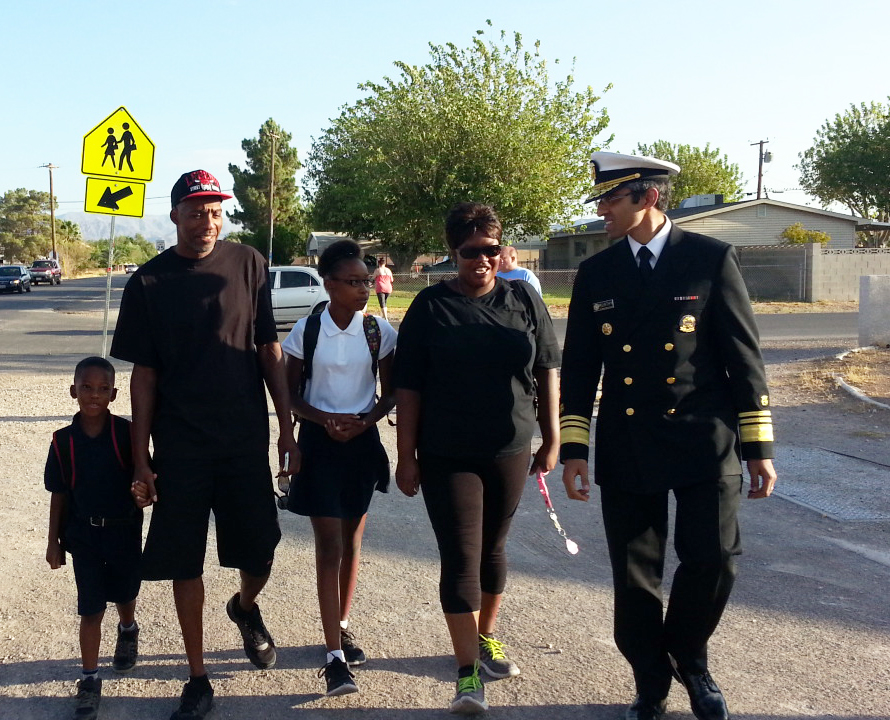Walking is one of the best things kids can do for their health, emotional well-being, and academic success. Yet between 1969 and 2009, the number of kids walking to school dropped from 48 percent to just 13 percent. During the same time period, childhood obesity tripled and traffic congestion grew around schools, negatively affecting air quality and snarling nearly everyone’s morning commute.
The good news is that over the past ten years, there has been a surge in demand for safe, walkable schools and neighborhoods. Just this September, U.S. Surgeon General Dr. Vivek Murthy issued a call to action for Americans to work together to make our communities more walkable for people of all ages and abilities. Ensuring that kids and families have safe routes to walk or bicycle to and from school is critical to making our communities more walkable for everyone. “Walking is one of the most powerful tools we have to increase physical activity and emotional well being for kids,” said Dr Murthy when he visited Myrtle Tate Elementary School in Las Vegas to raise awareness about walking to school.

US Surgeon General Dr. Vivek Murthy (right) walks to school with a family in Las Vegas, Nevada to raise awareness about the call to action to make schools and communities more walkable.
It’s not just our national leaders who are calling for Americans to walk more. There is rising demand for walking and walkability in local communities and schools across the country. Each year, more students, families and schools participate in the international Walk to School Day event, which takes place the first Wednesday of October each year. In 2014 more than 4,780 schools participated in the event and organizers expect even more in 2015.
Why? Walking is one of the simplest, most effective, and most affordable strategies for kids AND adults to build physical activity into their lives. One mile of walking translates to 2/3 of the recommended 60 minutes of physical activity each day. And the benefits of walking extend beyond health. Studies show that active kids do better. Research has shown that there are links between physical activity and academic achievement.
Teachers and parents can speak to the advantages of making sure students have opportunities to walk and be physically active. Jonathan McSwain, a physical education instructor at KIPP DC-Heights Academy in Washington DC, says that “physical activity is very important to Heights Academy students. Walking, jump roping, playing tag, and playing sports in PE class helps them get the wiggles out, giving them the ability to better concentrate on their studies and establishing an early love of being physically active.”
If you’re inspired to keep building the momentum for walking and bicycling beyond Walk to School Day, here are a few ideas for keeping it going throughout the school year.
- Keep walking and bicycling. The organizers of Walk to School Day have collected a variety of resources to support walking and bicycling to school year-round.
- Dig deeper. Explore the section of our new website dedicated to helping school administrators, teachers, and parents create active schools that provide opportunities for kids to get 60 minutes of physical activity a day.
- Get the facts. Bookmark this page for facts, stats, and infographics about the benefits of walking and bicycling to help build your case for ongoing programs or infrastructure improvements.
If your school made a tribute to Deb Hubsmith on Walk to School Day, we invite you to share photos or messages with us. Email our communications manager at margaux@saferoutespartnership.org.

